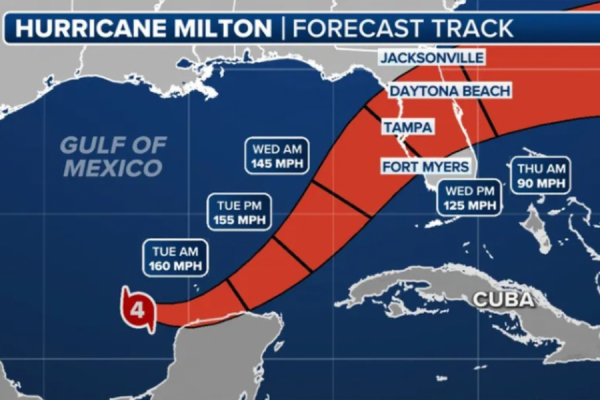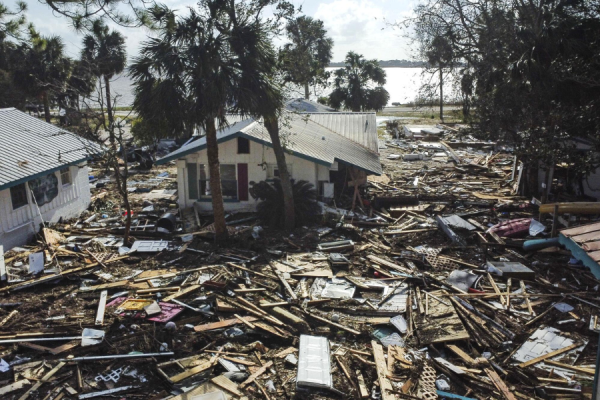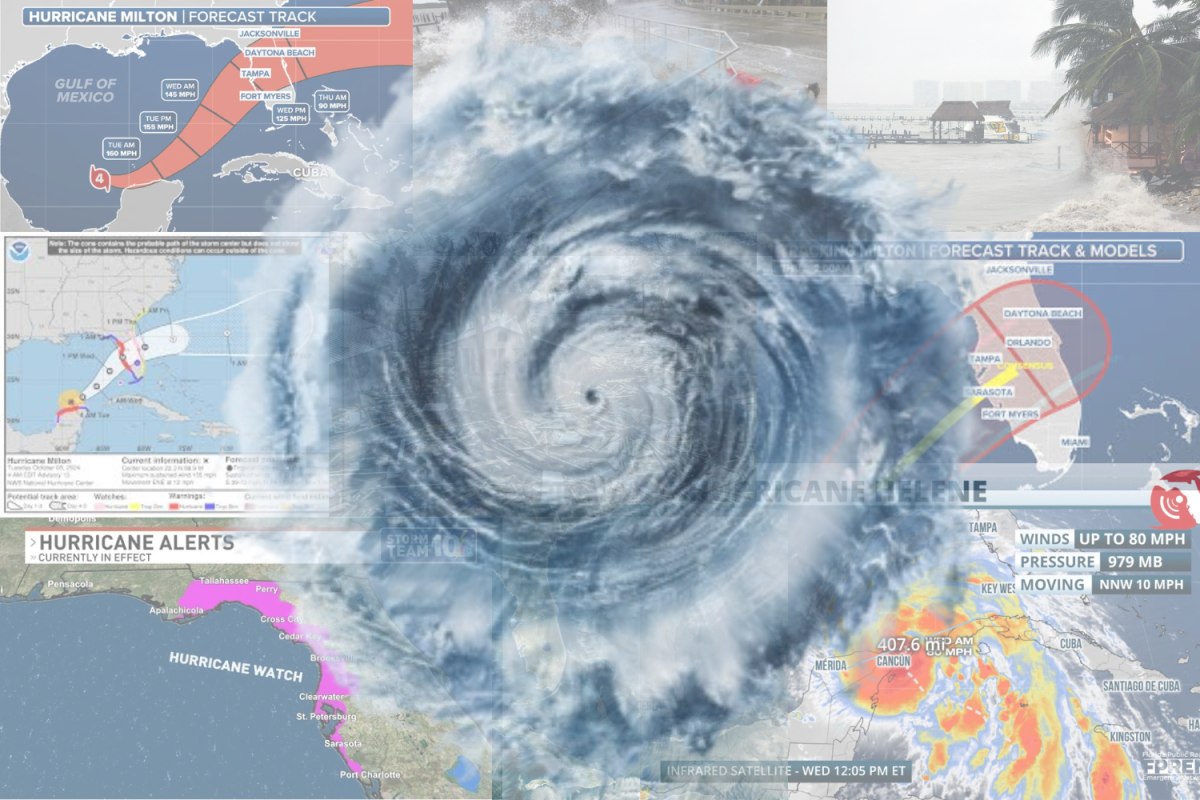As the air stills and streets empty, a calm before the storm indicates the unsettling future approaching. Eerie uncertainty replaces children’s play in the streets as boarded up houses prepare to fight the heavy wind and rain of the nearby storm. Residents in designated evacuation zones decide whether to remain in their homes or flee, faced with uncertainties either way, including financial hardships. Hurricane Helene and Hurricane Milton were two significant storms this season, provoking distress to those affected. These storms disproportionately affect those lacking resources to overcome natural disasters, according to borgenproject.org.
The Atlantic hurricane season, spanning from June 1 to November 30, has several hurricanes each year. Two notable storms of the 2024 season, Hurricane Helene and Hurricane Milton, caused mass destruction and distress throughout Florida and other southeastern states.
Hurricane Helene originated as a group of scattered thunderstorms in the Caribbean Sea September 23 and developed into a category four hurricane by September 26. The storm made landfall first in northwestern Florida and later Tennessee, Georgia, and North Carolina. Hurricane Helene produced 15 foot storm surges, as well as record breaking rainfall that caused flash floods and landslides, taking the lives of over 230 people. Hurricane Helene destroyed both homes and businesses, leaving four million residents without electricity and thousands trapped in their homes. Hurricane Helene also posed immense economic devastation, destroying an estimated 200 billion dollars of property and infrastructure, according to britannica.com.

Hurricane Milton followed shortly after Hurricane Helene and reached the status of a category five hurricane October 7, surpassing wind speeds of 157 miles per hour, according to convoyofhope.org. The storm made landfall October 9 in Florida and crossed the entire state, heading towards the Atlantic Ocean. Hurricane Milton left a wake of destruction as homes lay in debris and more than three million remain without electricity, according to apnews.com.
With the anticipation of mass devastation and wreckage, states posted evacuation zones that strongly encouraged residents to leave. A resident’s decision incorporates a variety of logistical factors, including financial consideration. Residents with the financial stability and means to pay for various costs such as gas, food, and housing have more options when it comes to evacuation. However, those without such savings, as well as those who lack insurance, face a more layered choice, according to medium.com.
Less affluent residents must decide whether to evacuate or stay in their homes. This dilemma creates a further economic divide between the wealthy, who have means to evacuate, and those who are less financially secure. This financial barrier emphasizes inequality and puts certain individuals in danger, making it hard for the less fortunate to socially and economically rebuild life, according to borgenproject.org. Ms. Alyson Tockstein, Upper School Science Teacher, commented on the numerous factors to consider when evacuating and the struggle for those with little financial security.
“Whether or not you can afford insurance is the first situation for people to consider,” Ms. Tockstein said. “Even with insurance, only certain things are covered. For example, if you had to evacuate but don’t have a family to go to, the cost of the hotel, the cost of temporary housing while the damage is assessed, the cost of gas is not guaranteed. If you do not have savings or live paycheck to paycheck, these unexpected costs might cripple you.”
Natural disasters, such as hurricanes, especially affect those in poverty or that lack insurance. Annually, 26 million people fall into poverty due to natural disasters, according to borgenproject.org. This poverty results from a multitude of components, such as lack of technology, less stable housing, and fewer resources after a hurricane. The lack of resources following a natural disaster, such as healthcare, transportation, and savings to rebuild and refurbish homes sets back the less fortunate and leads to more inequality. In contrast, affluent residents can often afford to evacuate out of high risk areas, which develops a cycle of poverty, creating further financial and social barriers, according to borgenproject.org.

Natural disasters institute and intensify financial struggles and economic inequalities. However, supporting those in need with funding and resources can break this financial divide. Ms. Tockstein describes how, on a local level, students can support those affected by the hurricane through fundraising.
“I remember that after Hurricane Katrina when I was a senior, we raised money to send to some of the hard-hit high schools in New Orleans so that seniors could still have senior events,” Ms. Tockstein said. “Today, students have the opportunity to help schools in need or to help them support their community.”
Hurricane relief supports individuals suffering economically and personally, offering a supportive environment to rebuild their lives. The federal government has provided immediate support to hurricane survivors by distributing over $137 million to rebuild. By October 9, the Federal Emergency Management Agency (FEMA) had dispersed more than 13.9 million liters of water, 157 generators, and 14.9 million meals, all of which help people rebuild their lives by providing basic necessities. These acts of support encourage communities to come together and break barriers of affluence and the cycle of hurricane devastation falling on the less fortunate. By working together and supporting hurricane relief, communities strive to become less financially divided and lead to a unified future in the face of adversity, according to fema.gov.
Featured Image by Avery Quake ’26




